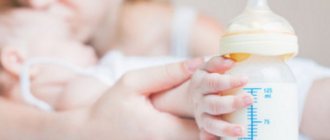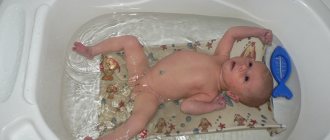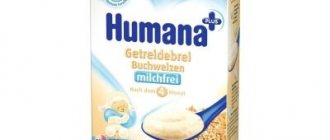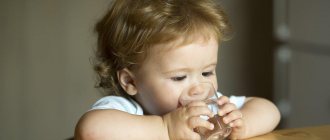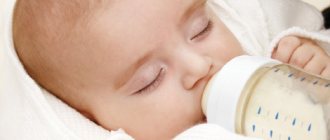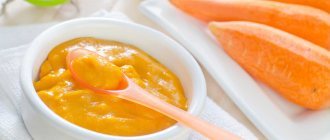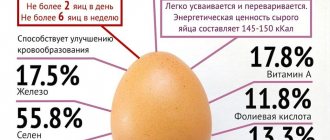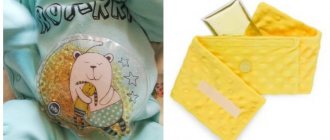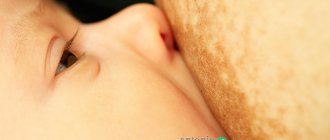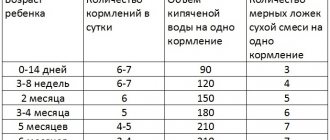How to dilute the mixture
Studying the instructions compiled by the manufacturer of food for little ones will allow you to make the mixture correctly. What to pay attention to when reading the manual:
- Is the food suitable for the age and characteristics of the child (allergies, prematurity, etc.).
- It should be clarified how many grams of the product are needed for a baby at his age.
- Recommended water temperature.
- How to store an opened package, and how long the box can be opened. For control, write on the package when it was opened. This is necessary in case you have to postpone feeding from this container and then return to it. Many parents, when traveling or moving, leave an opened package at home, and then cannot remember when they opened it.
- The proportions of the mixture and water are usually 1 scoop per 30 milliliters.
But still, the first step to proper feeding is choosing a product. Here is a list of the most popular infant formulas:
- Nanny is produced with goat's milk in New Zealand. Goat's milk has a number of advantages compared to cow's milk, it is suitable for babies with individual taste preferences and is easily digestible.
- Nutrilak is a product enriched with valuable substances and amino acids. Used for anemia, accelerates growth and development, suitable for weakened children.
- Nan, Nestozhen - products from Nestle. They are of high quality, contain prebiotics, Omega 3. Ensure the full development of the child.
- Nutrilon is a whole group of products for children: premature, with nutritional problems, allergic manifestations and healthy.
- Malyutka - formulas are distinguished by their low price and excellent quality, loved by many generations of infants and their mothers.
The product is chosen on the advice of a pediatrician, based on the taste of the baby and the capabilities of the parents.
Preparing formula for a newborn
If you need to organize nutrition for a newborn, you need to prepare the product especially carefully. The baby is completely unprepared to face an aggressive external environment - you need to maintain sterility, carefully monitor the cleanliness of your hands, dishes, and water.
Key points for preparing the mixture:
- You need to start preparing the milk by washing your hands with soap.
- Feeding utensils are sterilized in advance. You should always keep a few clean bottles and pacifiers in stock, and not sterilize them when the baby is already screaming from hunger.
- The product should be prepared immediately before feeding. Pour water heated to the required temperature (36-38 °) into a clean bottle (ideally, you need to warm it up 2-3 ° higher, since the liquid will cool down upon contact with the bottle and powder). You can heat water directly in the feeding container.
- The measuring spoon should not be wet. We take a full spoon without a slide and add it to the water. Cover with nipple and shake thoroughly to ensure all the powder is dissolved.
- An important point is to check the temperature of the milk received before feeding. From the nipple, without touching your hand, drip the mixture onto your wrist or at the bend of your elbow. The right mixture leaves a pleasant warmth.
The cooking process will quickly become familiar and will not cause difficulties. Let us note what food manufacturers and pediatricians do not recommend doing:
- Pour the powder into very hot water (if not indicated in the instructions), and then cool to the desired parameters. The nutrients in milk are destroyed when exposed to high temperatures. Moreover, you cannot cook the powder.
- Change proportions. Dilute below the recommended concentration - the baby will be hungry. If there is too much powder, digestive disorders are possible - regurgitation, colic.
- You should not independently calculate nutritional standards based on age, weight or other indicators. The volumes of formula required for babies are well calculated by pediatricians based on scientific data and many years of practice.
- Change mixtures frequently. The baby's digestive tract is not yet ready for a regular change of foods. To change food, if necessary, you need to choose a time when the child is healthy, cheerful and cheerful. You should also consult your doctor to choose the right product. All companies produce a wide range of foods that meet different needs and health conditions.
A few more tips to help mothers. A good help in preparing and maintaining sterility will be special devices - a sterilizer and a warmer. They will make life much easier for mothers, especially if the baby is completely bottle-fed.
Important: strictly following the preparation instructions on the packaging will provide the baby with milk that is as close in composition as mother’s milk, will protect against diseases, and ensure growth and development.
How to sterilize a bottle
Before sterilization begins, all baby dishes must be thoroughly cleaned of milk residues. It is better to do this right away so that the mixture does not dry out. Wash dishes using special detergents for babies.
Do not wash bottles and nipples with dishwashing detergents. Plastic dishes are convenient and safe, glass dishes are easy to wash, durable, and easier to sterilize.
Main methods:
- Boiling water. The bottles are filled with water and placed on the stove. Boiling time is 8-10 minutes.
- Electric sterilizer for children's dishes. A good option for caring mothers who have the means to purchase.
- Microwave oven with steamer. A convenient option, especially if you already have it on the household.
- Special means - solutions, tablets. This method is good in the absence of electricity and the possibility of boiling. The product is dissolved in water and the dishes are immersed for 30-60 minutes.
Parents will have to choose one of the options so that the baby receives food from sterile containers.
Accessories for artificial feeding
- 4-5 bottles and 4-5 nipples with holes appropriate for the child's age.
- Special brush for washing children's dishes.
- Bottle sterilizer (electric steam; microwave safe) or large enamel saucepan for boiling bottles. Recently, special self-sterilizing bottles have appeared (they can be sterilized in a microwave oven without the use of additional equipment).
- Tweezers or tongs for removing sterilized items from hot water.
- Baby food warmer (or a saucepan or ladle for heating in a water bath).
- A thermos bag for a bottle (for going to the clinic and traveling) must be from a good company - cheap models usually do not fulfill their purpose.
- Thermos for storing hot water.
- Children's drinking water in bottles.
- Not a wide funnel.
It is convenient when all items are from the same well-known manufacturer.
What water is best to dilute formula for newborns?
Baby food manufacturers have taken care of special water for preparing formulas. It differs from the usual one:
- high degree of purification from dirt and microbes;
- content of minerals, oxygen and other useful components.
Do I need to boil special baby water? Manufacturers claim that there is no such need. However, folk wisdom and many years of experience advise playing it safe. Most mothers prefer to pass this water through a filter, or even better, boil it.
When using regular tap water, filter it and then boil it. Long or repeated boiling is not recommended, as the water loses all its beneficial substances.
Note: Distilled water is not used to feed children.
How to properly feed your baby diluted formula
The mixture is prepared 5-10 minutes before feeding. It should disperse well in the water. There is no need to keep the finished milk longer. If the bottle has cooled down, you can keep it in hot water.
The hole in the nipple should allow the mixture to drip through so that the baby does not choke on the stream. The baby is fed by placing it on the hand, making sure that the head does not tip back.
The baby must eat the entire recommended portion; a remainder of a fifth of the norm is allowed. If your baby continues to suck after the formula is gone, you don't want him to swallow air. The bottle is taken away, a pacifier is given, or a toy is distracted.
The remainder of the prepared mixture cannot be stored for the next feeding. It is not recommended to keep the milk in the refrigerator and reuse it.
How to feed at night
Night feedings need to be properly organized so that the mother can rest well. There is no need to prepare the milk formula the night before.
You need to measure water into a sterile bottle and prepare the powder in the required quantity.
If there is a heater, water is kept in it. To avoid heating the water, you can use a thermos. In the absence of these useful devices, the liquid will have to be heated.
After feeding, it is better to immediately immerse all dishes in water to make it easier to wash in the morning.
How to feed while traveling
Most children make their first journeys in infancy. For the trip, you need to stock up on the right amount of food, sterile dishes, pacifiers, so as not to increase the baby’s stress from losing his native cradle with bad food.
The basic rule when feeding is to prepare the mixture before use. Therefore, grab water and keep the reconstitution powder in a clean, sealed bag.
You can take a thermos bag on the road, or use a heater from the cigarette lighter when traveling in a car. On the train, you can heat the water using titanium. On long journeys, many people come to the rescue with ready-made water for preparing baby food.
To help travelers, they sell ready-made diluted mixtures in sterile containers. Whether to trust such a product is up to the parents to decide.
Pros and cons of the ready-made mixture
| pros | Minuses |
| Completely ready to eat. | Not everywhere there are conditions for heating the mixture. |
| Optimal proportions of components. | Short shelf life. Once opened without refrigeration, it can be stored for no more than 2 hours. On a long trip, you will have to open a new package for each feeding. |
| Sterile. | In general, it will cost more than dry mixture. |
| Can be stored at room temperature in undamaged original packaging. | Less common, can only be found in large stores. |
How to store for later feeding of the baby
Opened baby food packages are usually not stored for long - about 3 weeks. In this case, the recommended conditions should be observed - humidity, temperature. Otherwise, the powder will absorb moisture, odors, and turn into a lumpy mass.
The prepared milk should be given to the baby within 2 hours. Better - immediately after mixing. It is prohibited to leave leftover formula until the next feeding. You cannot make a supply of product for a baby and store it in the refrigerator, simply heating it as needed.
Breast milk is the best nutrition for children. But they very rarely succeed in getting by with only them. Most mothers are forced to feed their babies formula. Many strong, healthy children have grown up on baby food. Infant formula is a reliable and proven method for many generations to ensure full growth and development of the baby.
Feeding scheme
The temperature of the milk mixture should reach no more than 37 degrees. For control purposes, you can drop 2-3 drops of the drink onto the wrist area. The liquid should be warm, not scalding.
The amount of formula consumed by the baby depends on the following factors:
• Times of Day;
• child's appetite.
The child should drink baby formula until he is completely satisfied. Any remaining milk after feeding should be thrown away. Already diluted mixture should not be reused.
